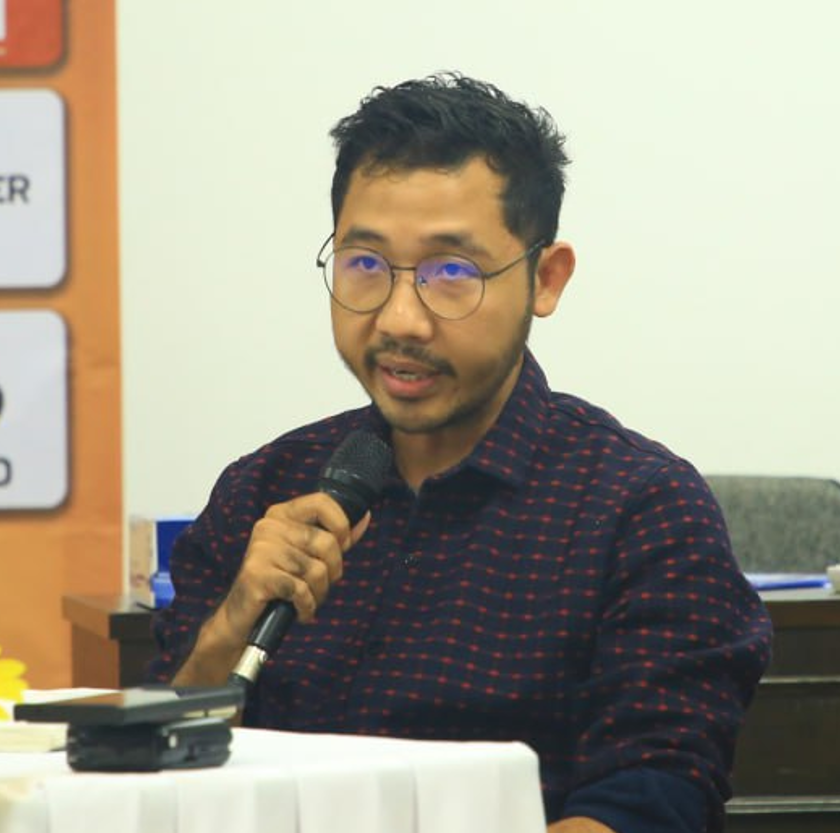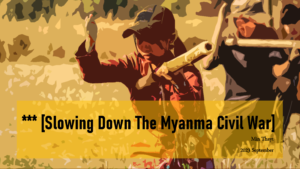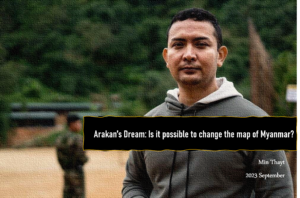Min Thayt
September 2023
How much can TNLA accept liberal democracy?
The Ta’ang National Liberation Army [TNLA] is an ethnic revolutionary organization that was born in 1992 for ethnic liberation. Northern Shan State Based in the Ta’ang ethnic settlement area, armed resistance activities are being carried out. The International Crisis Group (ICG) reported in a report released on September 4, 2023 that the TNLA has grown in military strength since the 2021 military coup. With the increase in military power, the map of TNLA’s military control has expanded.
TNLA’s military control areas are included as strategic areas in the map of Myanmar. In this strategic area, there is a major border trade road between China and Myanmar. It is the main trade road that connects Mandalay and Muse. The areas controlled by the TNLA are areas where China’s trade interests are based. Therefore, TNLA leaders must consider the China factor in their military activities. TNLA Secretary General, Brigadier General Tar Bone Kyaw said that the Chinese representative person had requested to TNLA regarding military matters. TNLA’s national liberation movements are careful not to clash with China’s interests. China also has close relations with EROs in Myanmar. Especially, China has established close links with EROs within Shan, Kachin and Rakhine states.
The TNLA is a member of the three Northern Alliance EROs group. Its include Arakan Army (AA), which represents the Rakhine people, is in this military alliance, Myanmar National Democratic Alliance Army (MNDA), which represents the Kokang ethnic, and the Ta’ang National Liberation Army (TNLA), which represents the Ta’ang ethnic. These three groups have close ties with China. The reason is that they are ethnic liberation armed groups located on the border line close to China. Among them, Rakhine State is not close to the border with China, but it is part of the region that face the Indian Ocean as China’s back exit.
TNLA is an armed organization that practices Ta’ang nationalism. The emergence of a new Ta’ang state is one of the main goals of TNLA. In addition, self-determination and ethnic equality are the political goals of the TNLA. Ethnic armed organizations have only ethnic liberation as their main national goal. The ethnic armed groups engaged in armed conflict do not talk about liberal democracy. It is seen that only ethnic liberation and self-determination is intended as the final goal.
- Are liberal democracies and tribal armed revolutions in opposite slots?
China is not a liberal democracy country.
- Is there an ideological connection in the relationship between the EROs fighting for ethnic liberation within Myanmar and China?
Liberal democracy is capable of guaranteeing self-determination and ethnic equality. But the armed struggle organizations for ethnic liberation do not speak loudly of liberal democracy.
- Are armed movements and liberal democracy at odds?
- Or is it the perception of China, which is not a liberal democracy?
TNLA believes that it is still too early to talk about liberal democratic values while the ethnic armed revolution is being waged. The TNLA also uses Ta’ang nationalism as an ethnic ideology. In addition, TNLA wants a federal system, which is the political goal of the current Spring Revolution in Myanmar. But the direction of the spring revolution is federal democracy. It must be remembered that the federal system is not exclusive. The Ta’ang nationalism practiced by the TNLA can be linked to liberal democracy. Among the types of nationalism include liberal nationalism. However, it is difficult to promote liberal democratic values to an armed army that is waging an armed revolution. This is because armed organizations are built under a command-and-control system. Liberal democracy has to exist with freedom. Naturally, it’s the opposite.
The TNLA tried to bridge the Ta’ang ethnic liberation and the Spring Revolution. The TNLA joined forces with the People Defense Forces [PDF] under the National Unity Government [NUG], a new armed resistance organization that emerged in the spring revolution. The NUG’s two political goals are to fight the military dictatorship and build a federal democracy. For the TNLA, it is necessary to fight the military dictatorship in order to eliminate ethnic oppression. In addition, it is necessary to advance the federal system for self-determination. These two points can be said to be a common ground between TNLA and the Spring Revolution.
The TNLA focused on combining Ta’ang nationalism with federalism. TNLA aims for a fusion of federalism and nationalism. But it is difficult to estimate how much of that is about liberal democracy. If Myanmar becomes a federal state, it is worth considering whether it will become just a federation state without liberal democracy. We will be able to look at other ethnic armed organizations like TNLA as an example.
Author:

Min Thayt is a political critic writer and is currently studying for a Master of Public Policy and Global Affairs at the University of British Columbia, Canada. His research area is Burmese socio-political culture and Myanmar Democratization. He has written many socio-political commentary articles and currently has 14 published books.


